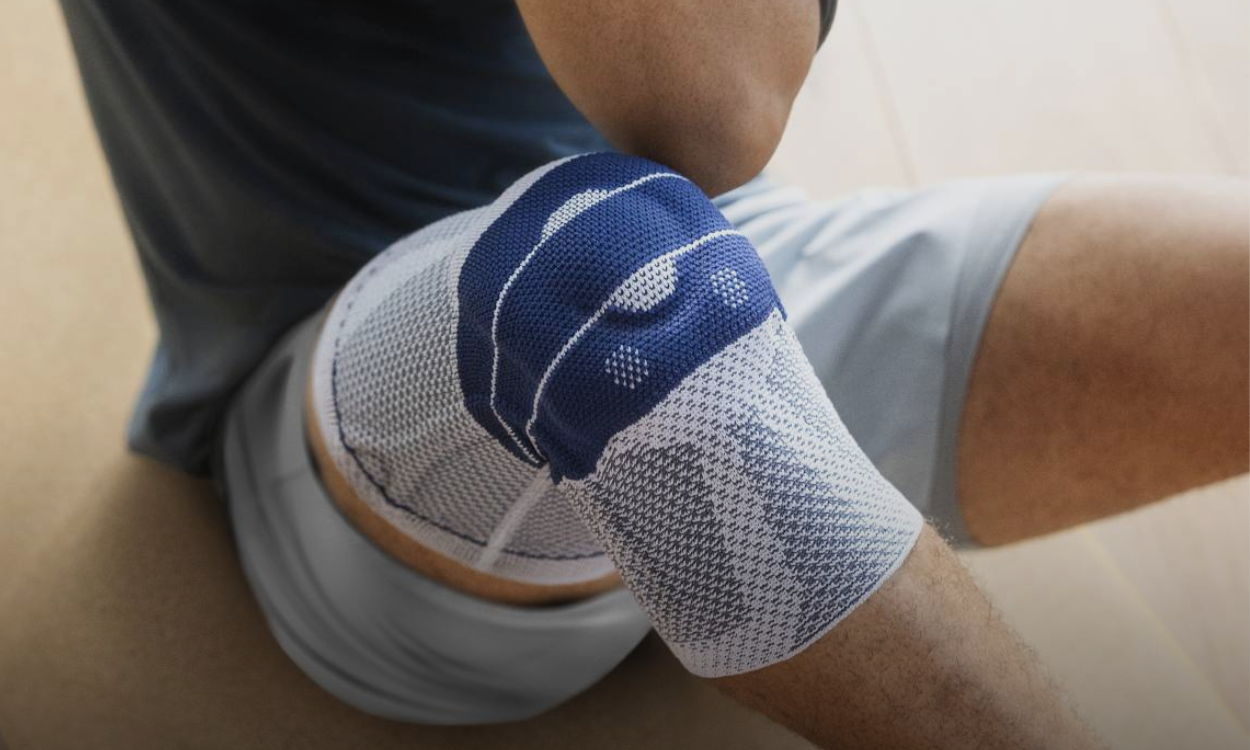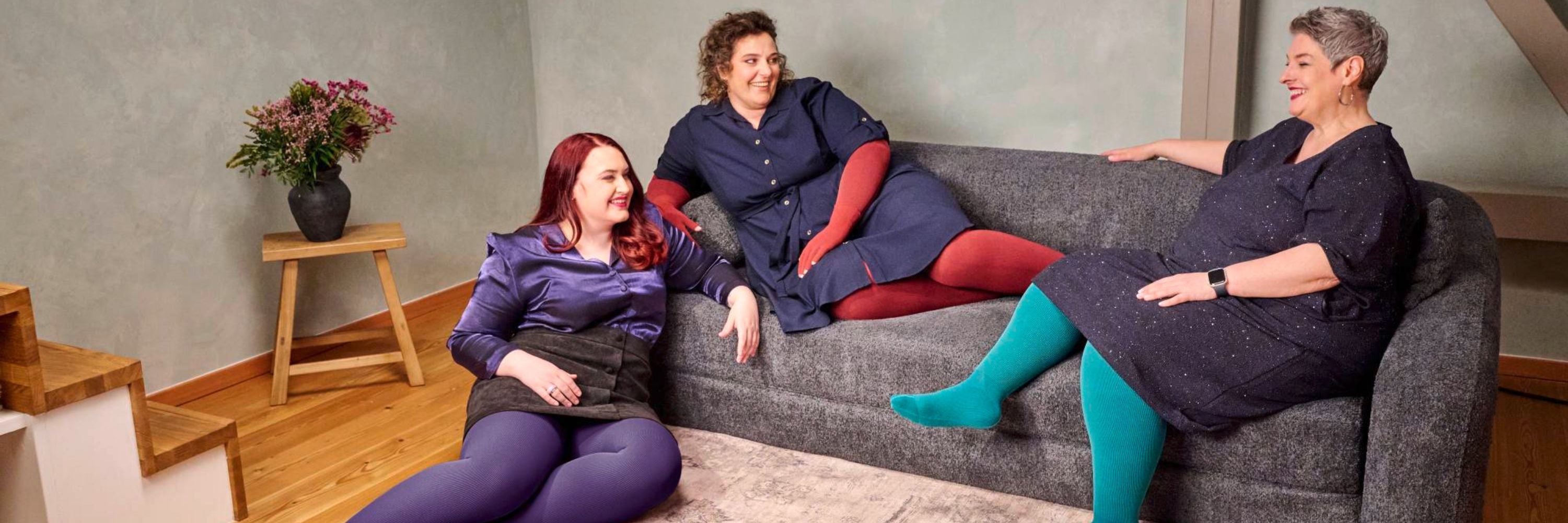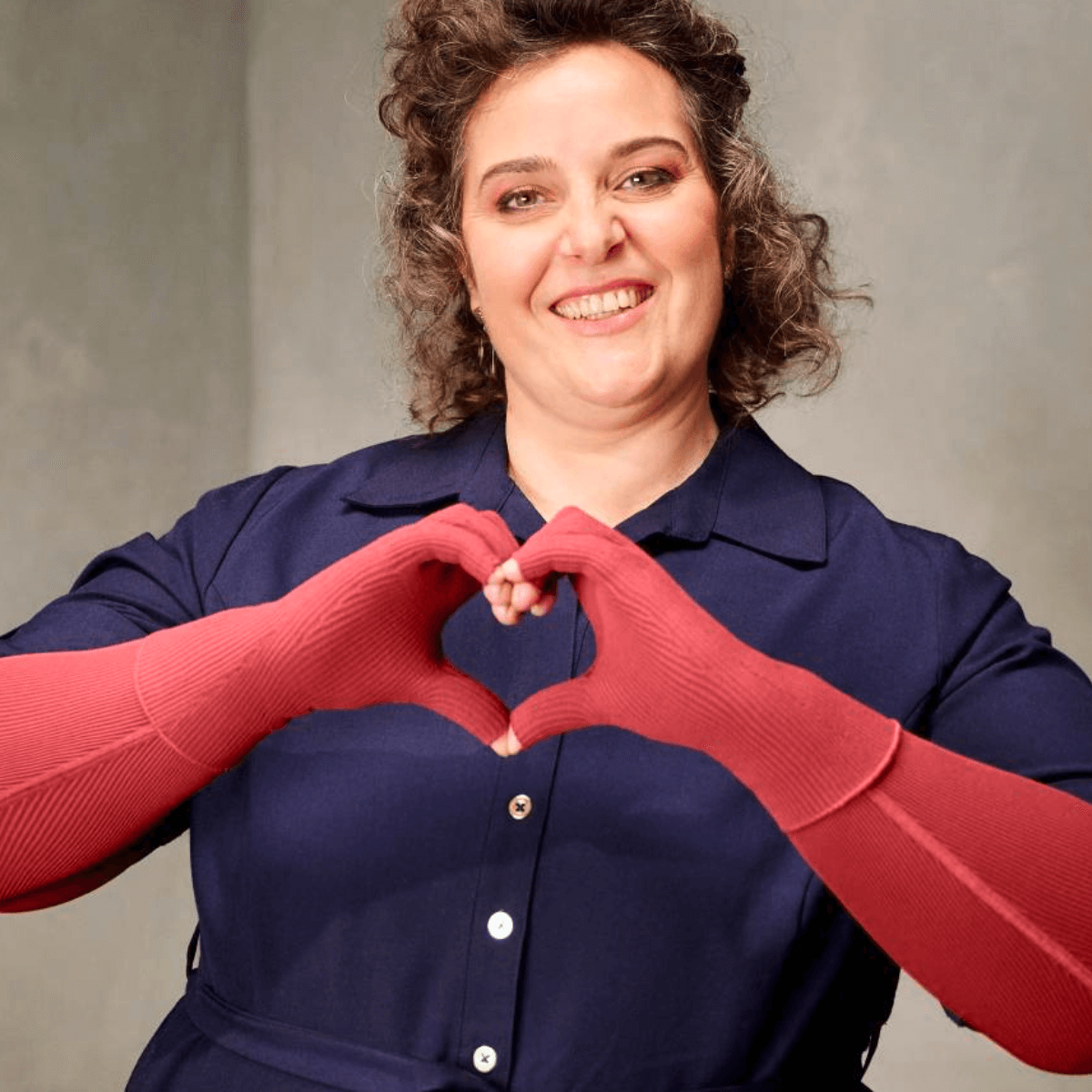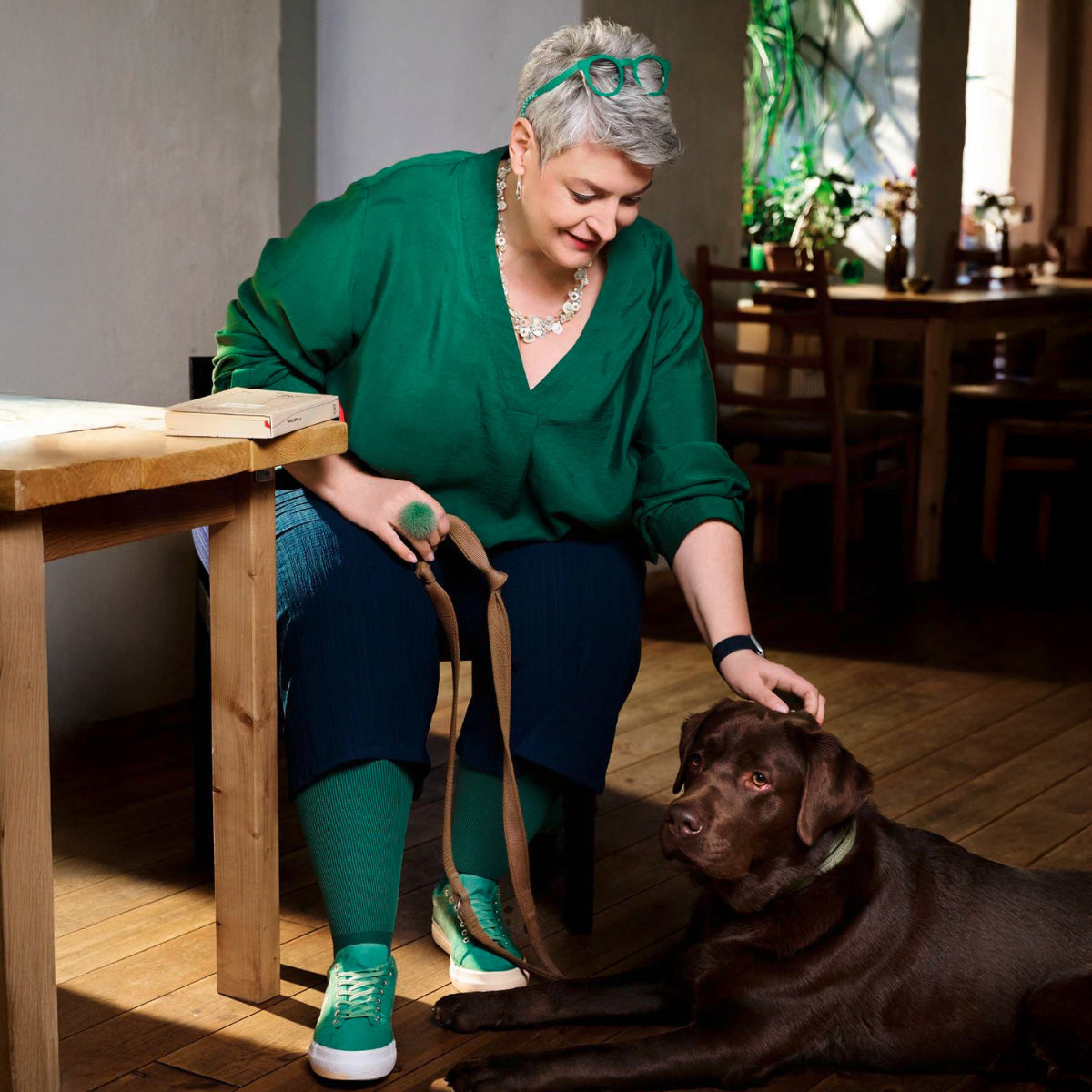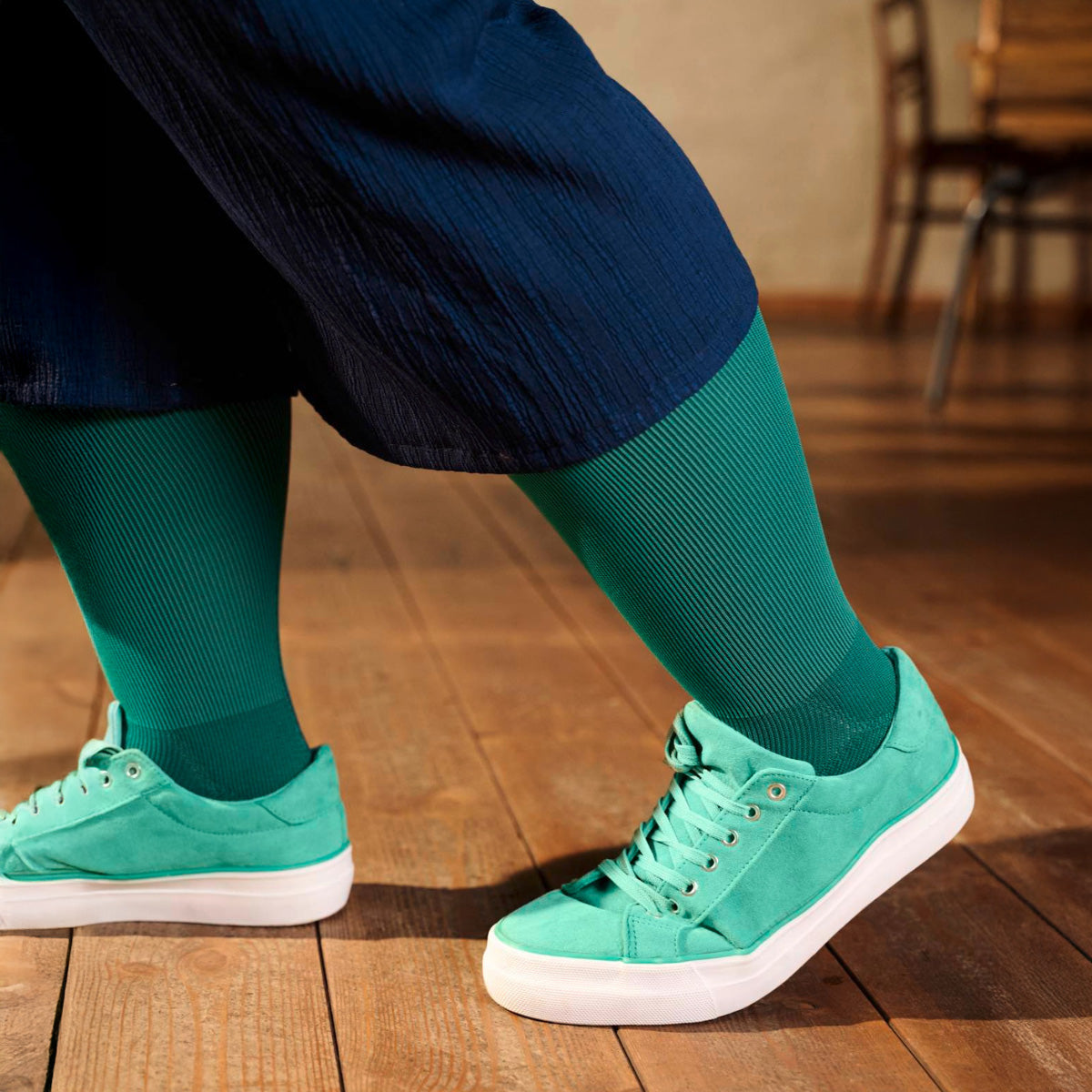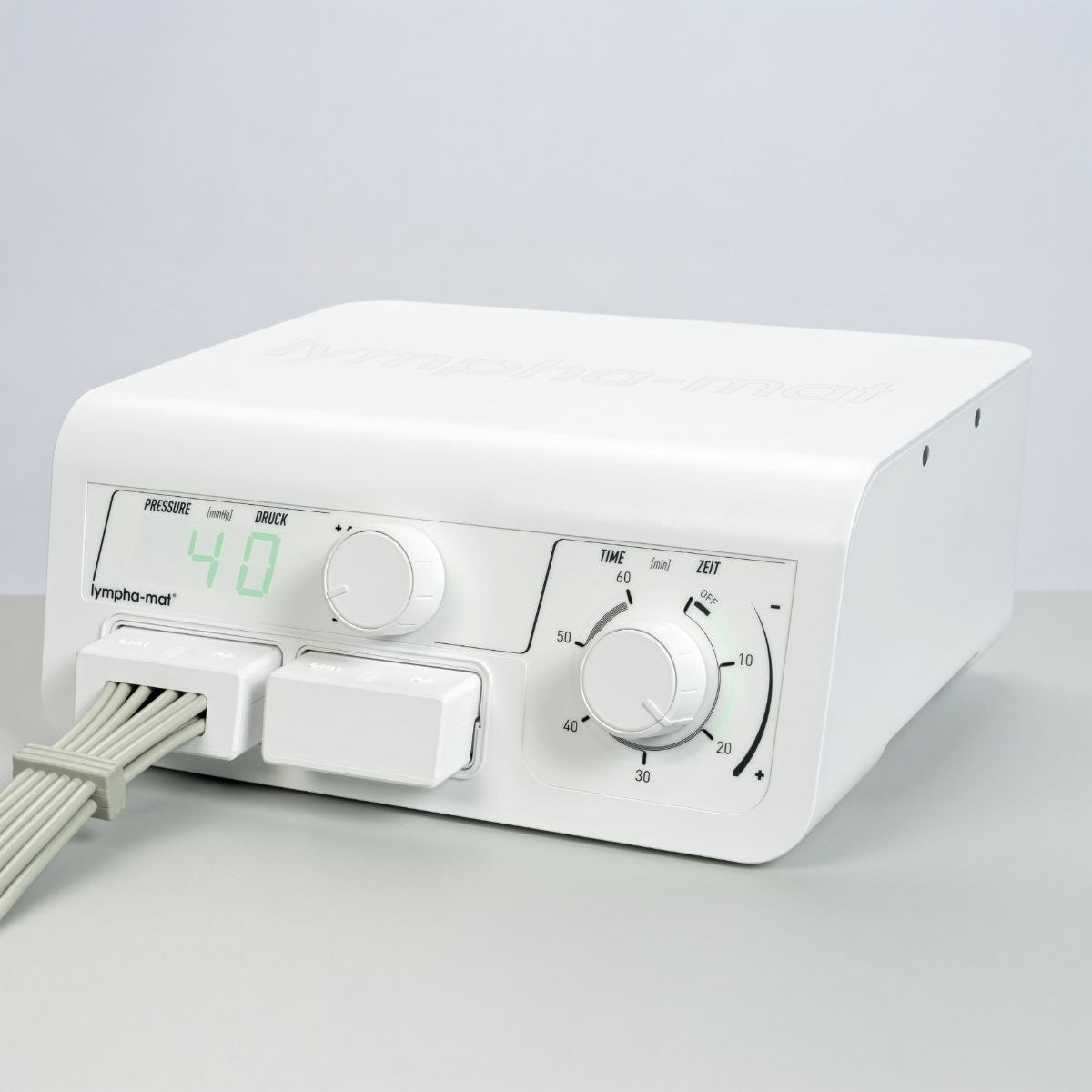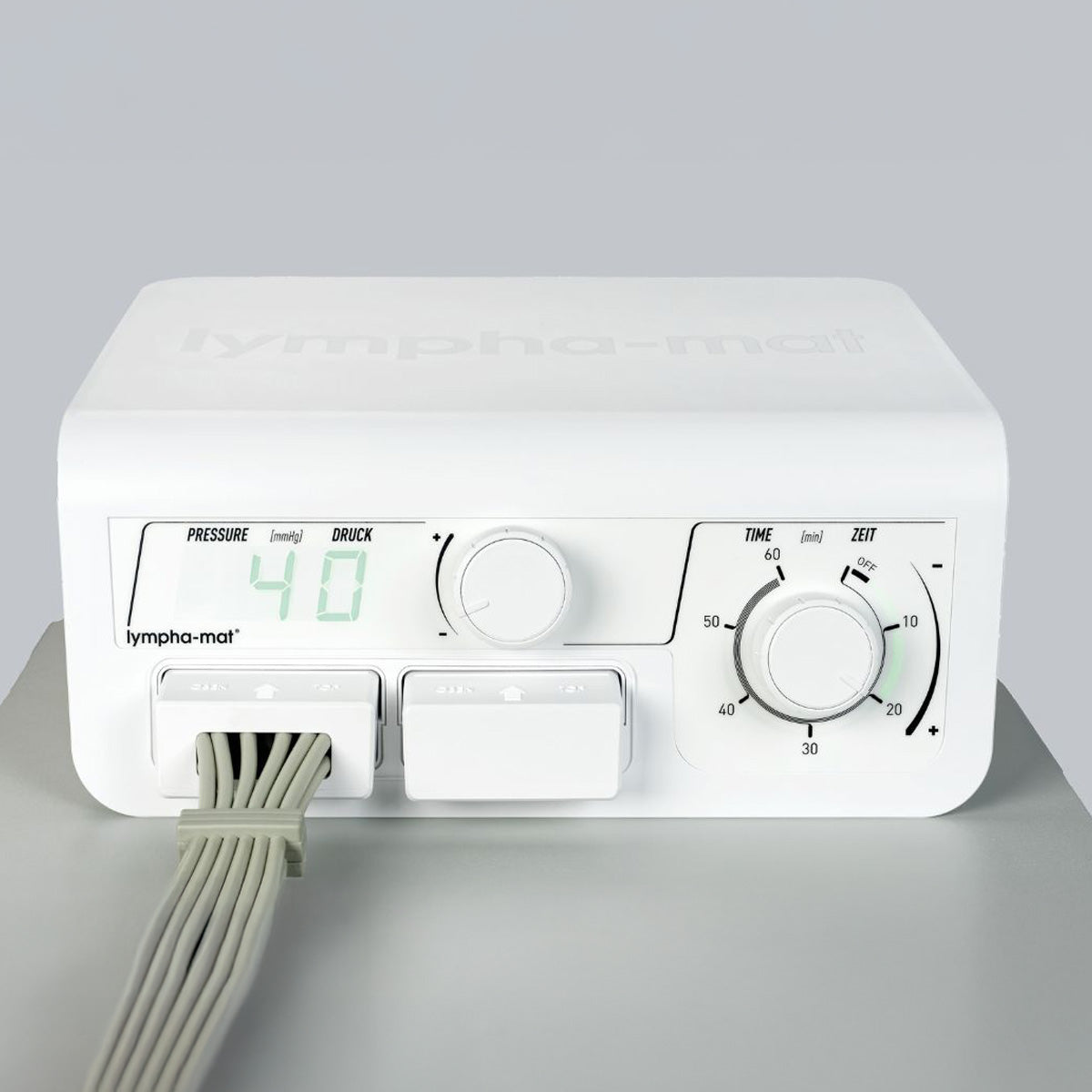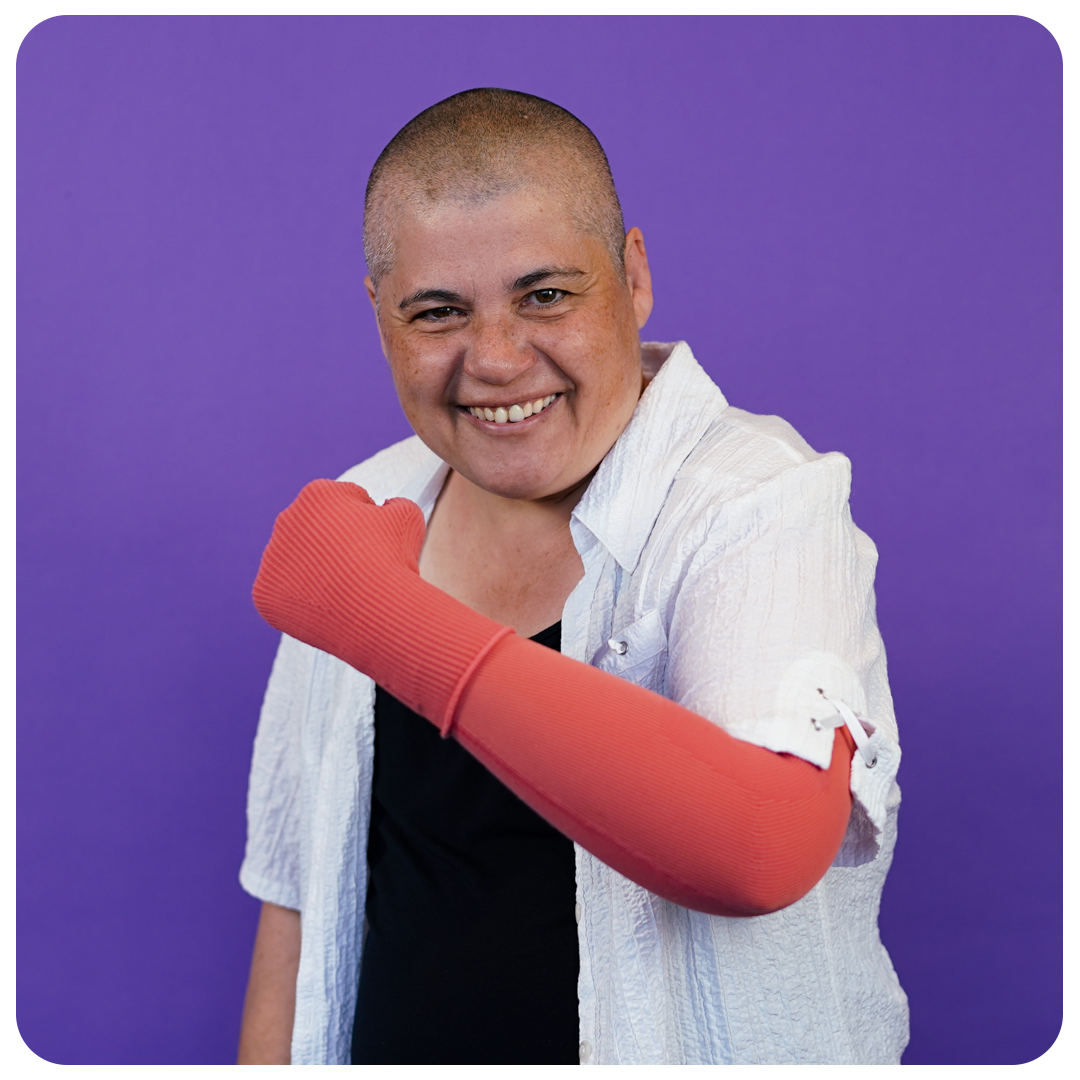Learn about the different forms of edema including lymphedema and lipedema, different treatment options like compression garments, and how to successfully manage symptoms and live an active and carefree life!
THE VENOTRAIN® CURAFLOW SOLUTION
Compression garments for the treatment of edema
Bauerfeind’s flat knit Curaflow compression garments are custom-made and perfectly adapted to the lymphedema or lipedema of the patient’s legs, feet, arms, or hands. VenoTrain® Curaflow compression garments relieve pain and maintain a consistant pressure all with an exceptional wearing comfort!
BÖSL Lympha-mat®
Gradient intermittent compression for specific treatment of lymphatic edema
The BÖSL Lympha-mat® 300N offers an effective form of intermittent pneumatic compression therapy. Next to manual lymphatic drainage, intermittent pneumatic compression has been firmly integrated as a pillar of current decongestion therapy practises. This gradient intermittent compression mobilizes the fluid in the limb allowing it to disperse unhindered and without return flow.
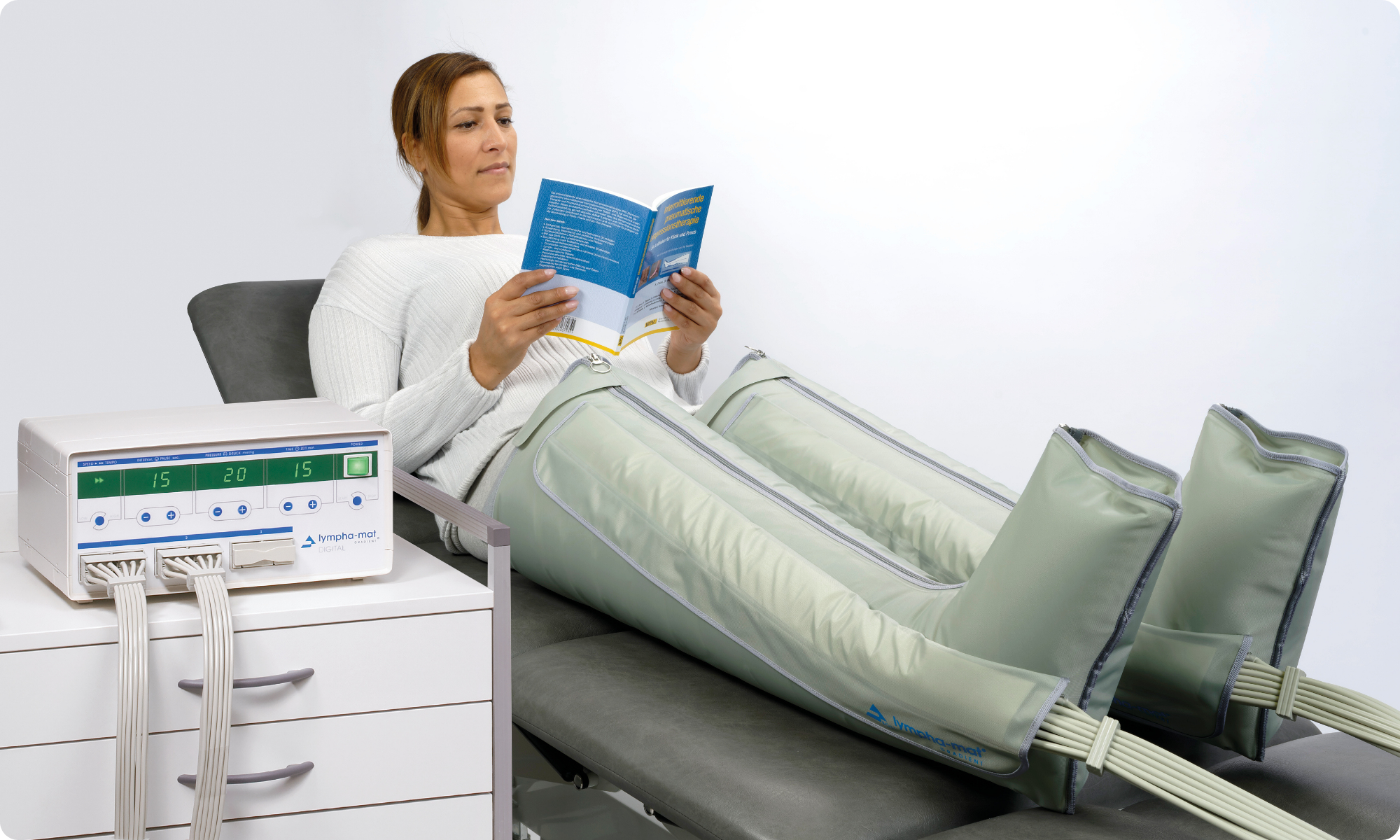
OVERVIEW OF THE DIFFERENT TYPES OF EDEMA
Swelling can occur in various parts of the body as a result of injury, inflammation, or due to an underlying condition. Edema is swelling resulting from excess fluid being trapped in the body tissues. Most commonly edema presents as swollen legs, feet or ankles but it can also occur in your hands, your face, or any other part of the body. Unfortunately, edema can go unnoticed for some time before pain and complications appear.

LYMPHEDEMA
Lymphedema is a type of lymphatic drainage disorder. When the lymphatic system cannot properly function, it leads to a build-up of excess fluid in the tissues, resulting in swelling, most commonly in the legs and feet.

LIPEDEMA
Lipedema is a chronic fat distribution disorder that typically manifests on the legs, buttocks, and in some cases arms. Lipedema affects both sides of the body equally and occurs almost exclusively in women.

Arm lymphedema after breast cancer
More than five percent of all women experience swelling in the arms and hands after cancer surgery as a result of lymph injury.
This occurs when the lymphatic fluid cannot be transported away as usual due to damage sustained during treatment, such as surgery or radiation therapy. The fluid build up causes swelling and also increases the risk of infection.
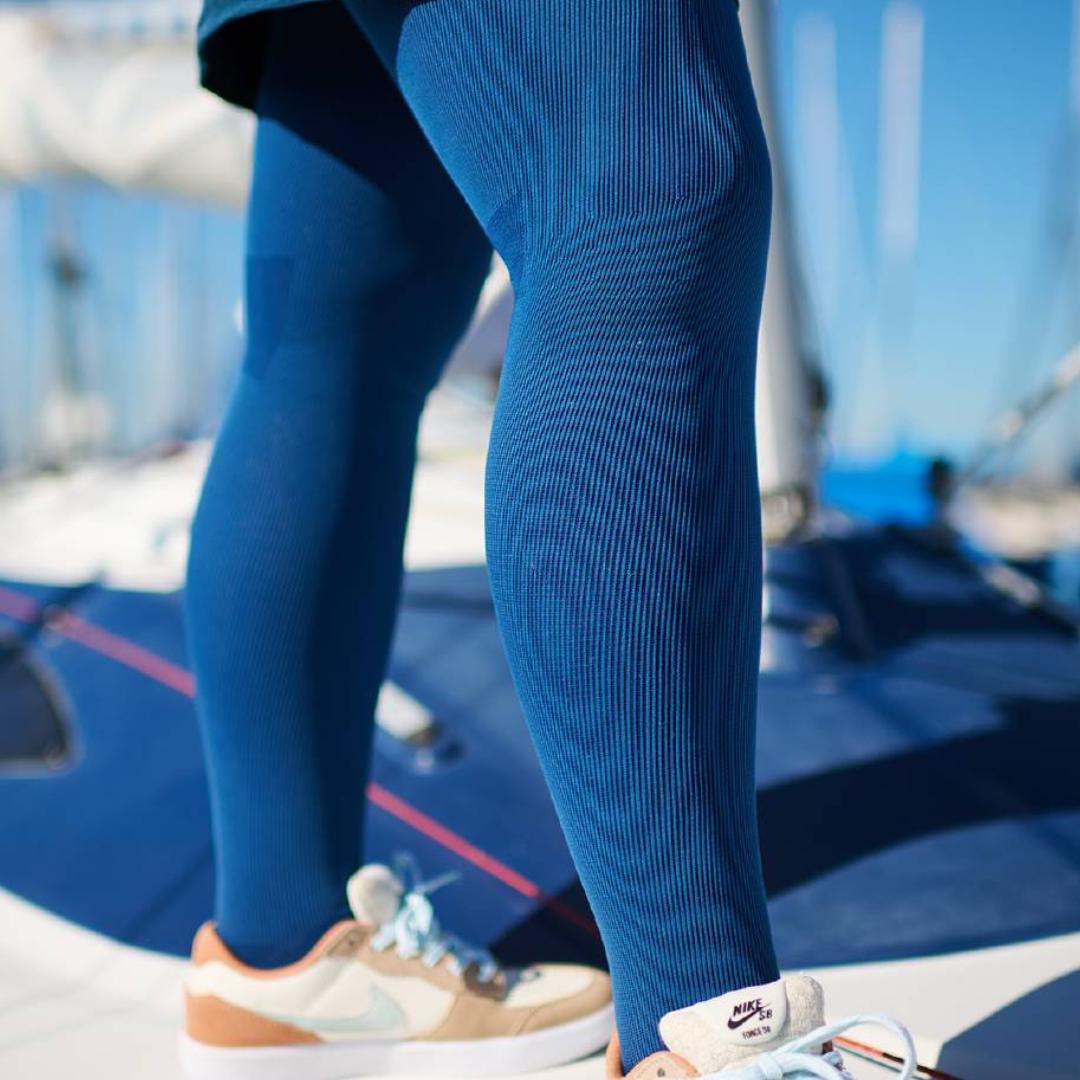
Phlebolymphedema
Phlebolymphedema is a type of lymphedema that results from a failure of both the lymphatic system and the venous system.
Swelling in the lower legs and feet can be the first signs of chronic venous insufficiency (CVI). This condition causes swelling as a result of fluid build-up in the body tissue. If left untreated CVI can progress and the fluid-build up can overload the lymphatic system leading to phleboedema.
Edema Therapy Blog
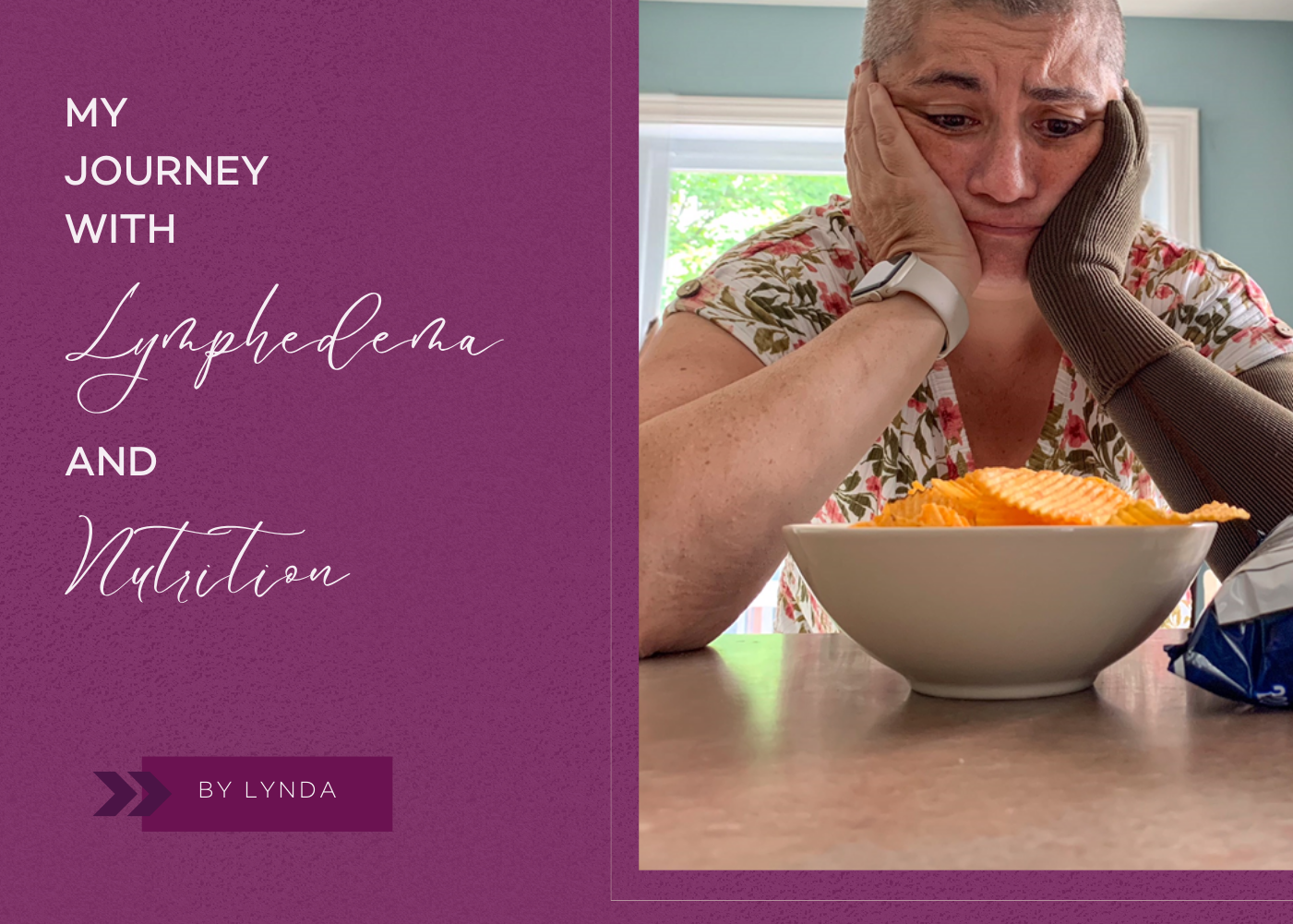
Living with lymphedema requires constant attention to diet and lifestyle. The necessary adjustments may seem restrictive, but they are essential to better manage this condition. Every effort counts...

SKINCARE AND SELF-MANAGEMENT WITH LYMPHEDEMA
Amy gives us a personal overview of the importance of proper skin-care as a form of lymphedema management. She shares why skin-care is so crucial to managing your lymphedema as well as helpful tips...
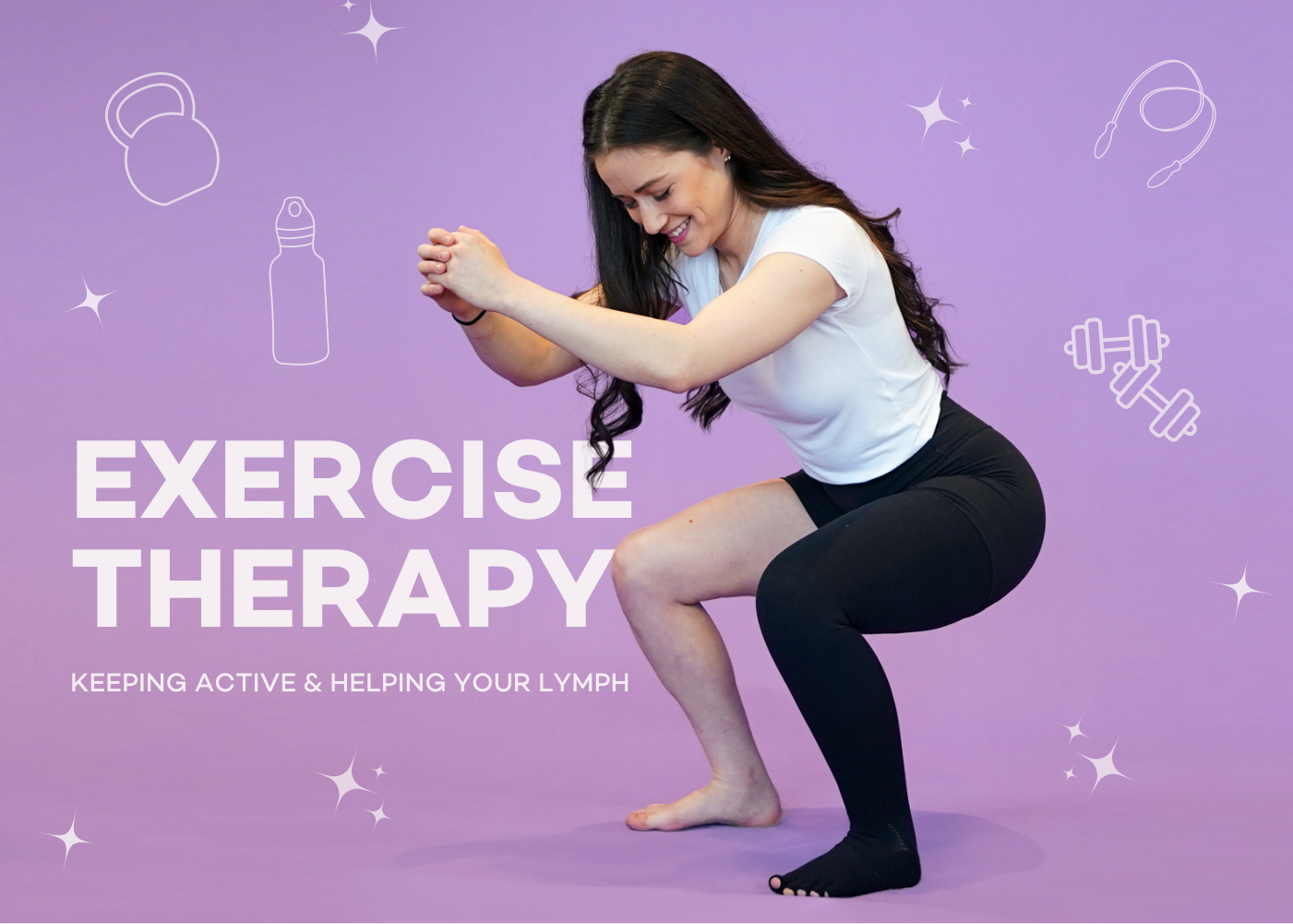
Embracing exercise therapy as part of your care routine. By including exercise therapy as a part of your routine, you can experience significant improvements in physical function and overall well-b...
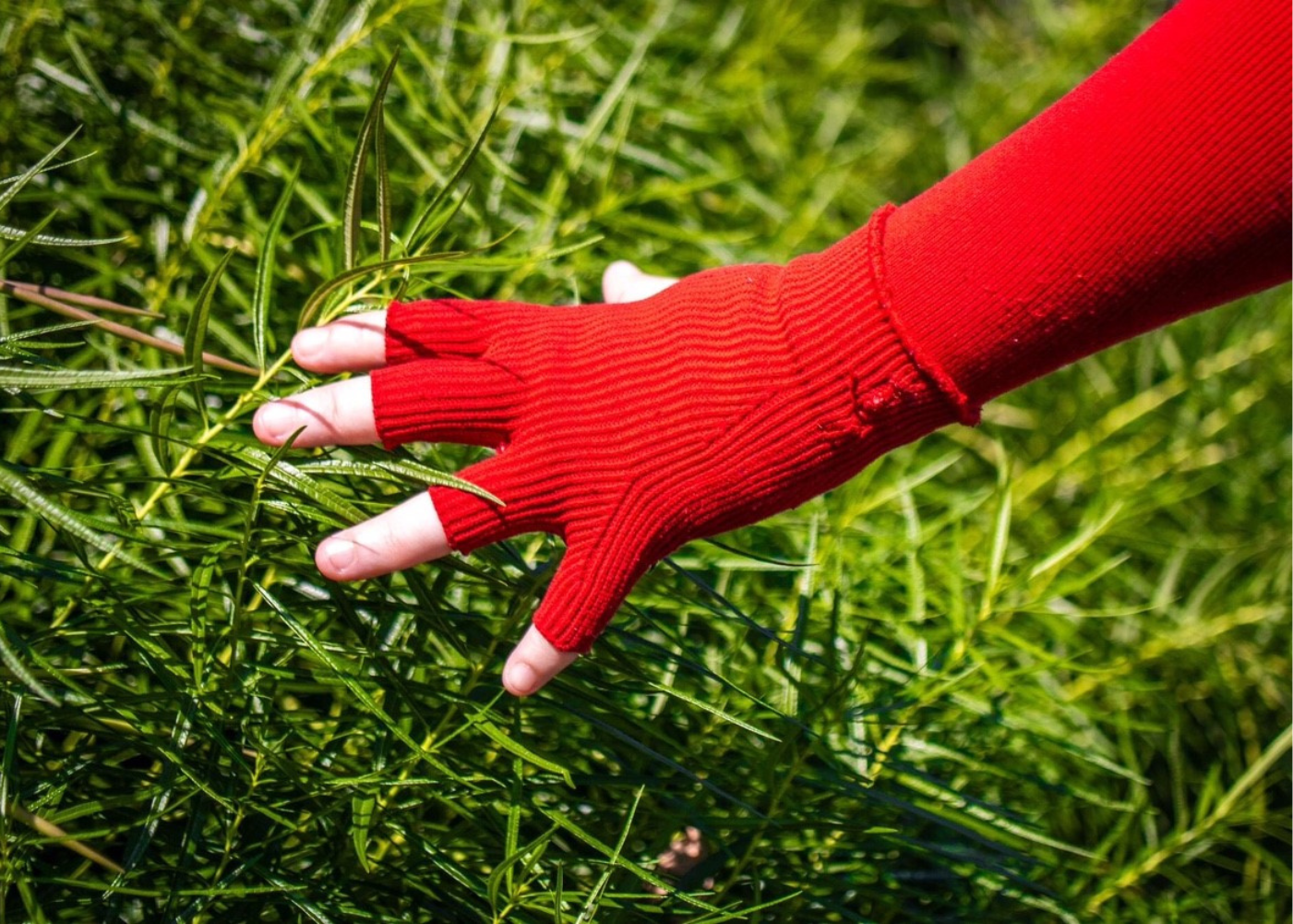
Compression and Lymphedema: The Key to My Freedom
Depuis que j’ai été diagnostiqué avec un lymphoedème du bras suite à une chirurgie du cancer du sein, ma vie a pris une tournure inattendue. La sensation de lourdeur, le gonflement constant et les...
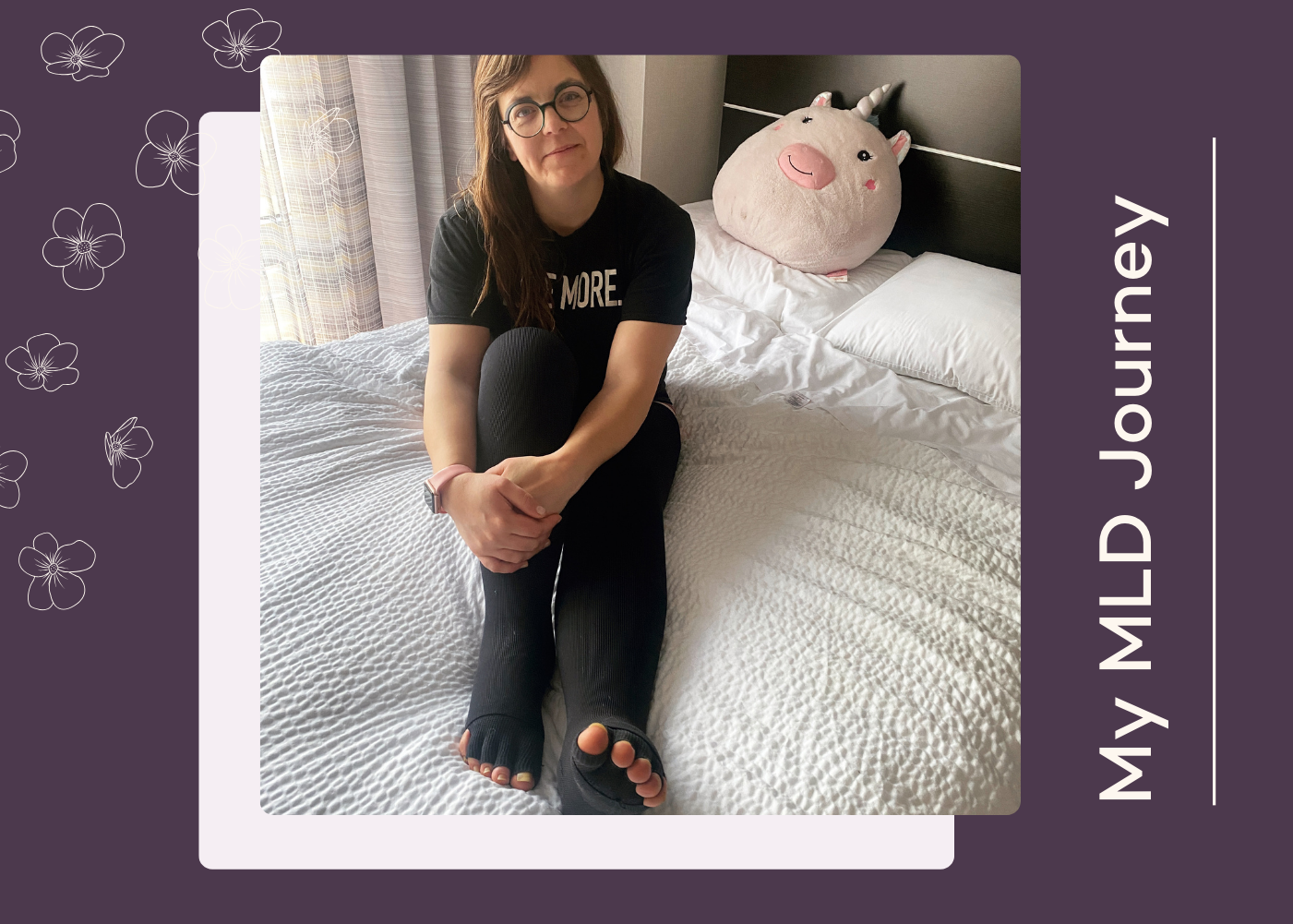
First hand experience with MLD and tips from a lymphie! Have you ever heard about a Lymphatic Massage? Or as it's more commonly known Manual Lymphatic Drainage (MLD)? Well, if you've ever been curi...

Often, we think of the holidays as a season to focus on joy and quality time with loved ones. However, for a lot of people, this season can bring additional challenges; especially for those with c...
LIVING A CAREFREE LIFE WITH EDEMA!
At Bauerfeind, we are passionate about our products and the amazing people who wear them! When it comes to treating Lymphedema or Lipedema we believe in a holistic approach ensuring that the patient's overall well-being is the most important factor!
Our goal is to create a supportive community to spread knowledge and awareness! We would love to hear about your personal experiences and your favorite feel-good tips!
We look forward to connecting with you!



